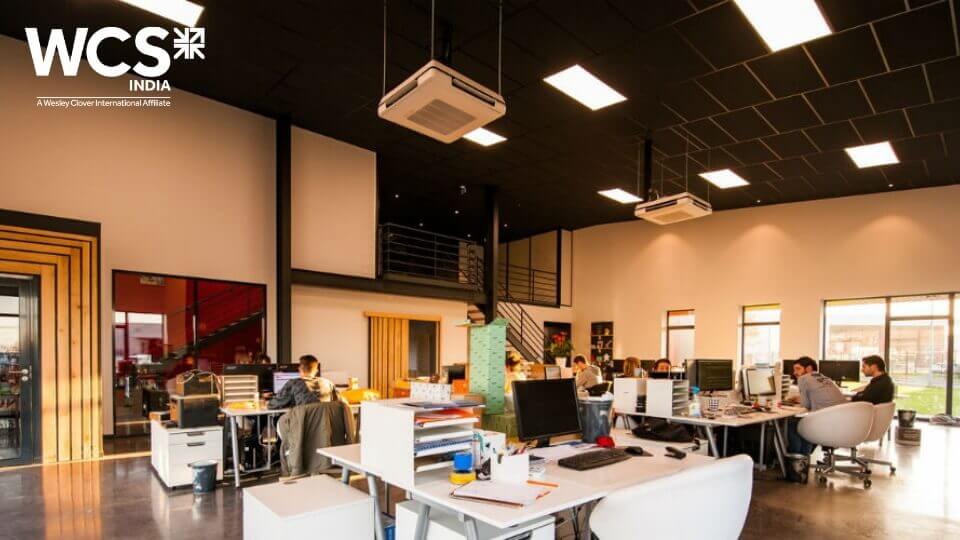Leveraging Unified Communications in Manufacturing Industry
Today, more than ever before, manufacturing industry is at a stage where it needs to reinvent itself. With pressure on costs increasing with every minute, the industry has to look at how the processes can be made more efficient without investing in additional resources.
A key element of manufacturing process is the collaborative effort that is required between different teams: design and procurement, manufacturing-planning-QA-inspection-logistics-sales. These collaborations are not one time events, rather any good manufacturing unit would have many of these going in parallel throughout the day. To this, you add the ingredient of distance – not all teams are based in the same building, plant, city, country; and you have a complex problem on your hands. Not addressing this results in slippages in delivery timelines, go-to-market dates, design issues, to name just a few.
This is where smart organisations are making effective use of unified communication solutions.
A unified communication solution is not just an IP-PBX. If voice extensions are what you are looking for, there are multiple cost effective solutions in the market. Any PBX solution that is designed about people being available on their respective desks, particularly on the shop floor, has missed the basic objective of the voice solution – to connect to people, by a mile and is literally a waste of money and resources.
The last place you would expect to find the shop floor people is their desks.
If that is the case, then how do you contact and collaborate with them?
There are multiple solutions to this problem
1) Cordless Wi-Fi phones
2) Cordless Dect Phones
3) Cordless Blue Tooth phones
4) SIP Clients on the smart phones of the personnel using Wi-Fi for connectivity (or GSM is Wi-Fi is not an option).
Free Download: Learn how to make your business communications effective and borderless with our UCC solutions.
Cordless Wi-Fi phones
Using Wi-Fi in the plant has multiple issues:
There is a lot of equipment on the shop floor that uses Wi-Fi. Using multiple wi-fi devices can potentially lead to complications. You would need to ensure that devices operate on non-conflicting channels. This is easier said than done because not only do you have to manage wi-fi signals in the plant, rather you also have to manage spurious signals from adjoining plants and buildings. This can impact user experience.
Secondly, wall penetration of Wi-Fi signals is not very high. This leads to a requirement of having multiple access points.
If the interference related issues and access point location can be managed, it is possible to effectively use cordless wi-fi phones. However being analog in nature these phones only support voice. If instead of the cordless analog phones, you use the SIP client on your smartphone operating on wi-fi, full features can be used including video chat, file sharing etc.
Cordless Dect Phones
These phones offer the same benefits that Wi-Fi cordless phones offer. However since there are no other DECT devices on the shop floor, there is negligible or no interference. In addition to this, the fact that DECT operates on a lower frequency band, it has better propagation properties as compared to 2.4GHz, the Wi-Fi frequency. Proper deployment of DECT base stations can enable the entire shopfloor to be ‘wireless”.
DECT systems support all desk phone functionalities and features. This gives the user, office like experience even when not in the office.
Blue Tooth Cordless Phones
These phones are effective for short ranges (say 10-20ft) and line of sight. Most desk phones support a blue tooth module that allows the receiver to be carried around and “connected” to the base via blue tooth.
SIP client on Smart Phones
Feature rich SIP clients are available as a free app for all OS platforms and can work for basic calling etc. However clients provided by OEMs mirror all the features and functionalities of the system. Using these OEM provided phone based clients, one can chat, share, call, confer and collaborate.
OEM provided clients also allow for handoff to desk phone and vice-versa, allowing the user flexibility to be mobile on the shop floor and not be stuck to the desk for the duration of the call.
Some organisations do not allow employees’ own smartphones on the shop floor for security, safety, espionage reasons. However company owned devices can be used to work on wi-fi with the app enabled to allow users to talk, chat, collaborate while not on their desks.
Coming back to UC as a tool for enabling higher productivity, more efficient processes and optimising costs, this is no longer a choice. Its an imperative. The effectiveness of working from your own desk with access to all your data and documents, and collaborating with others working in similar environment cannot be challenged. Add to this the option of having a video call rather than just a voice call and you have a highly effective engagement medium. Presence, and status features further enhance this by allowing you to include people on the fly as and when needed.
Organisations are leveraging this medium to keep people from having to travel, walk, use conference rooms while achieving the same end results of collaboration.






